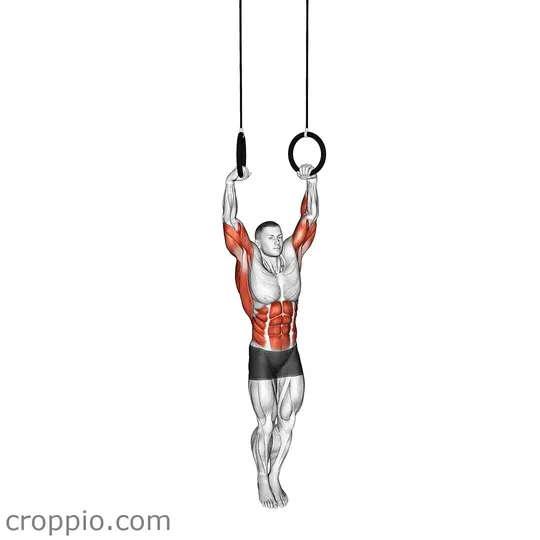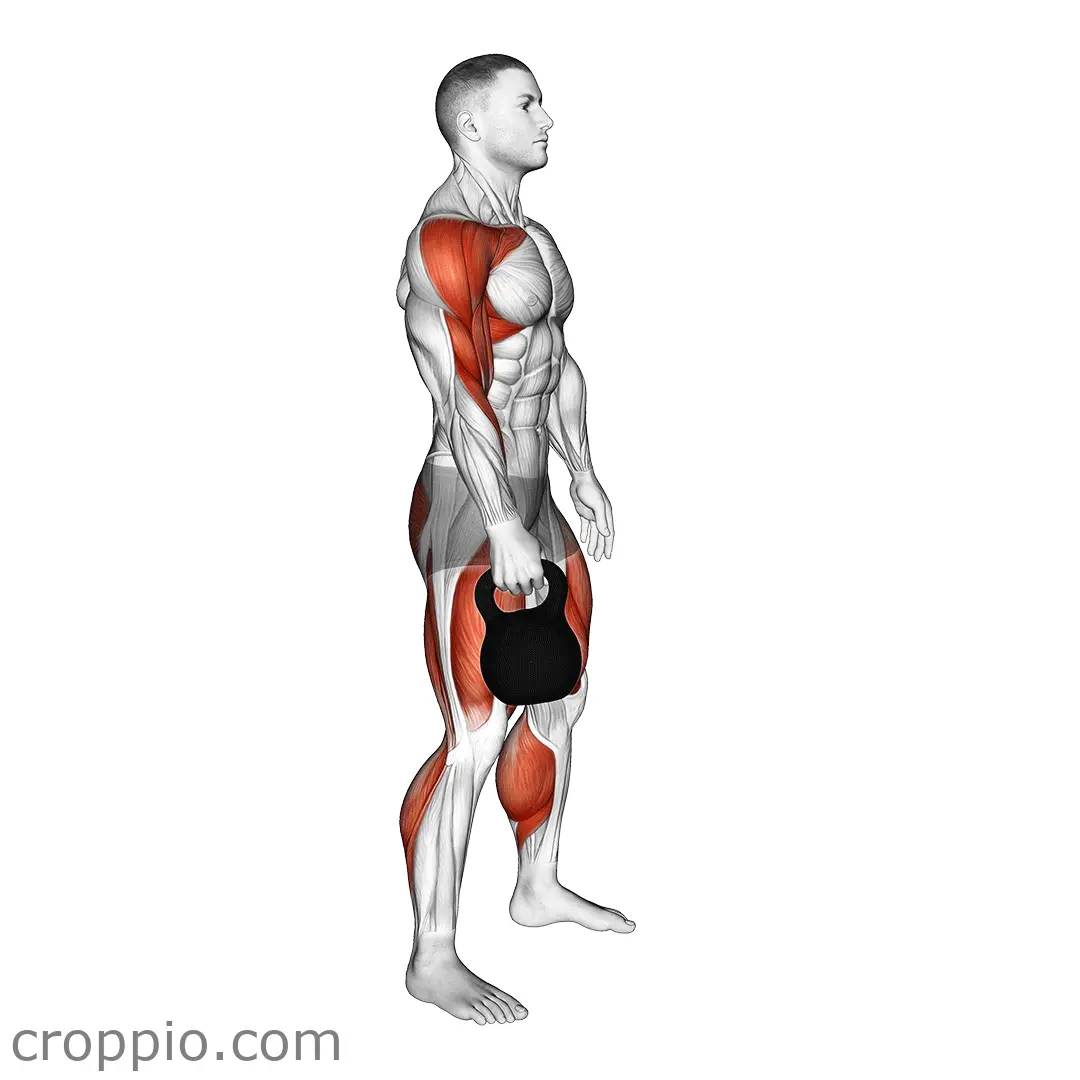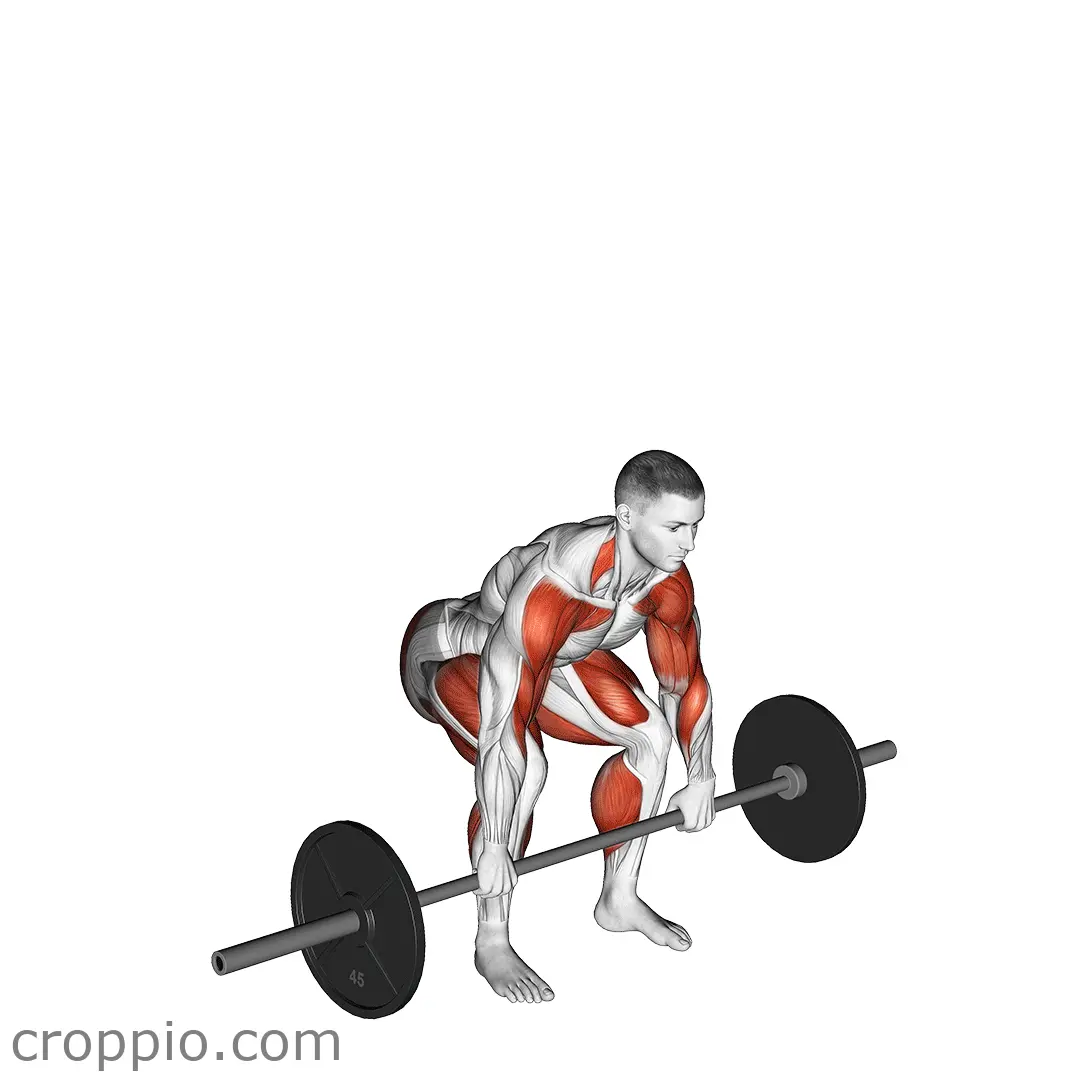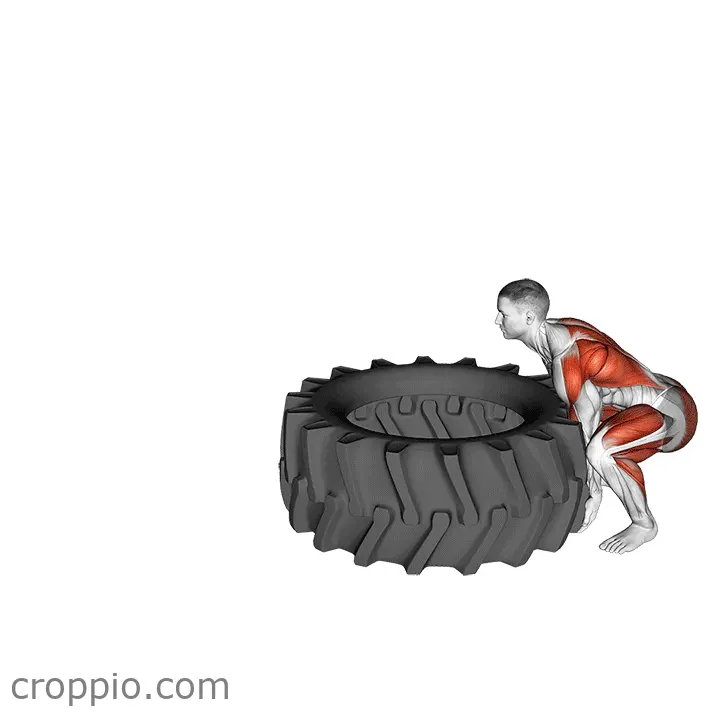Ring Muscle Up

Muscles Involved
The ring muscle-up is a highly demanding exercise that engages multiple muscle groups, making it an excellent full-body workout. The primary muscles targeted during this movement are the upper body muscles, including the biceps, triceps, and shoulder muscles (deltoids). The explosive pull-up phase predominantly works the latissimus dorsi and rhomboids in the back, while transitioning into the dip extends the emphasis to the chest and triceps. Key secondary muscles involved include the core stabilizers, such as the rectus abdominis and obliques, which help maintain stability throughout the movement.
Top Mistakes
- Neglecting proper shoulder engagement, which can lead to injury.
- Not generating enough momentum, resulting in insufficient height for the transition.
- Allowing the rings to swing excessively, decreasing control and stability.
- Using an incorrect grip, which can hinder performance and increase strain.
- Failing to engage the core, leading to improper body alignment during the movement.
Execution Tips
- Start with a strong grip on the rings, ensuring they are parallel to the ground.
- Engage your shoulders by pulling them down away from your ears before initiating the pull.
- Use a powerful, explosive pull to generate enough height for your body to pass the rings.
- Bring your chest toward the rings during the transition phase for better leverage.
- Control your descent by lowering yourself slowly, maintaining tension in the muscles.
- Keep your core engaged throughout the movement to support body alignment and balance.
Workouts
To incorporate ring muscle-ups into your workout routine, consider starting with a progression approach if you are not yet able to perform the exercise. Begin with assisted muscle-ups or a combination of pull-ups and dips. A well-structured workout might include:
- 3-5 sets of 3-5 ring muscle-ups (or scaled versions).
- Follow with 3 sets of 8-12 chest-to-bar pull-ups and 3 sets of 8-12 ring dips.
- End with core work, such as hanging leg raises, for 3 sets of 10-15 reps.
Conclusion
The ring muscle-up is not only a flashy display of strength and coordination, but it also provides substantial fitness benefits. It enhances upper body strength, improves grip strength, and engages the core effectively. Given its complexity, regular practice will lead to improved muscle endurance and stability, making it a valuable addition to any strength training regimen.



